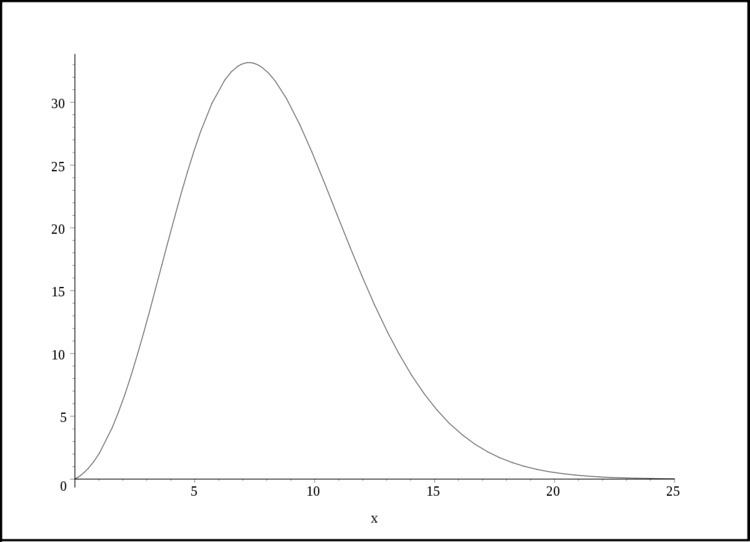 | ||
In mathematics, a unit sphere is the set of points of distance 1 from a fixed central point, where a generalized concept of distance may be used; a closed unit ball is the set of points of distance less than or equal to 1 from a fixed central point. Usually a specific point has been distinguished as the origin of the space under study and it is understood that a unit sphere or unit ball is centered at that point. Therefore one speaks of "the" unit ball or "the" unit sphere.
Contents
- Unit spheres and balls in Euclidean space
- General area and volume formulas
- Recursion
- Fractional dimensions
- Other radii
- Unit balls in normed vector spaces
- Metric spaces
- Quadratic forms
- References
For example, a one-dimensional sphere is the surface of what is commonly called a "circle", while such a circle's interior and surface together are the two-dimensional ball. Similarly, a two-dimensional sphere is the surface of the Euclidean solid known colloquially as a "sphere", while the interior and surface together are the three-dimensional ball.
A unit sphere is simply a sphere of radius one. The importance of the unit sphere is that any sphere can be transformed to a unit sphere by a combination of translation and scaling. In this way the properties of spheres in general can be reduced to the study of the unit sphere.
Unit spheres and balls in Euclidean space
In Euclidean space of n dimensions, the unit sphere is the set of all points
The open unit ball is the set of all points satisfying the inequality
and the closed unit ball is the set of all points satisfying the inequality
General area and volume formulas
The classical equation of a unit sphere is that of the ellipsoid with a radius of 1 and no alterations to the x-, y-, or z- axes:
The volume of the unit ball in n-dimensional Euclidean space, and the surface area of the unit sphere, appear in many important formulas of analysis. The volume of the unit ball in n dimensions, which we denote Vn, can be expressed by making use of the gamma function. It is
where n!! is the double factorial.
The hypervolume of the (n−1)-dimensional unit sphere (i.e., the "area" of the surface of the n-dimensional unit ball), which we denote An, can be expressed as
where the last equality holds only for n > 0.
The surface areas and the volumes for some values of
where the decimal expanded values for n ≥ 2 are rounded to the displayed precision.
Recursion
The An values satisfy the recursion:
The Vn values satisfy the recursion:
Fractional dimensions
The formulae for An and Vn can be computed for any real number n ≥ 0, and there are circumstances under which it is appropriate to seek the sphere area or ball volume when n is not a non-negative integer.
Other radii
The surface area of an (n–1)-dimensional sphere with radius r is An rn−1 and the volume of an n-dimensional ball with radius r is Vn rn. For instance, the area is A = 4π r 2 for the surface of the three-dimensional ball of radius r. The volume is V = 4π r 3 / 3 for the three-dimensional ball of radius r.
Unit balls in normed vector spaces
More precisely, the open unit ball in a normed vector space
It is the interior of the closed unit ball of (V,||·||),
The latter is the disjoint union of the former and their common border, the unit sphere of (V,||·||),
The 'shape' of the unit ball is entirely dependent on the chosen norm; it may well have 'corners', and for example may look like [−1,1]n, in the case of the norm l∞ in Rn. The round ball is understood as the usual Hilbert space norm, based in the finite-dimensional case on the Euclidean distance; its boundary is what is usually meant by the unit sphere. Here are some images of the unit ball for the two-dimensional
These illustrate why the condition p ≥ 1 is necessary in the definition of the
Note that for the circumferences
Metric spaces
All three of the above definitions can be straightforwardly generalized to a metric space, with respect to a chosen origin. However, topological considerations (interior, closure, border) need not apply in the same way (e.g., in ultrametric spaces, all of the three are simultaneously open and closed sets), and the unit sphere may even be empty in some metric spaces.
Quadratic forms
If V is a linear space with a real quadratic form F:V → R, then { p ∈ V : F(p) = 1 } may be called the unit sphere or unit quasi-sphere of V. For example, the quadratic form
